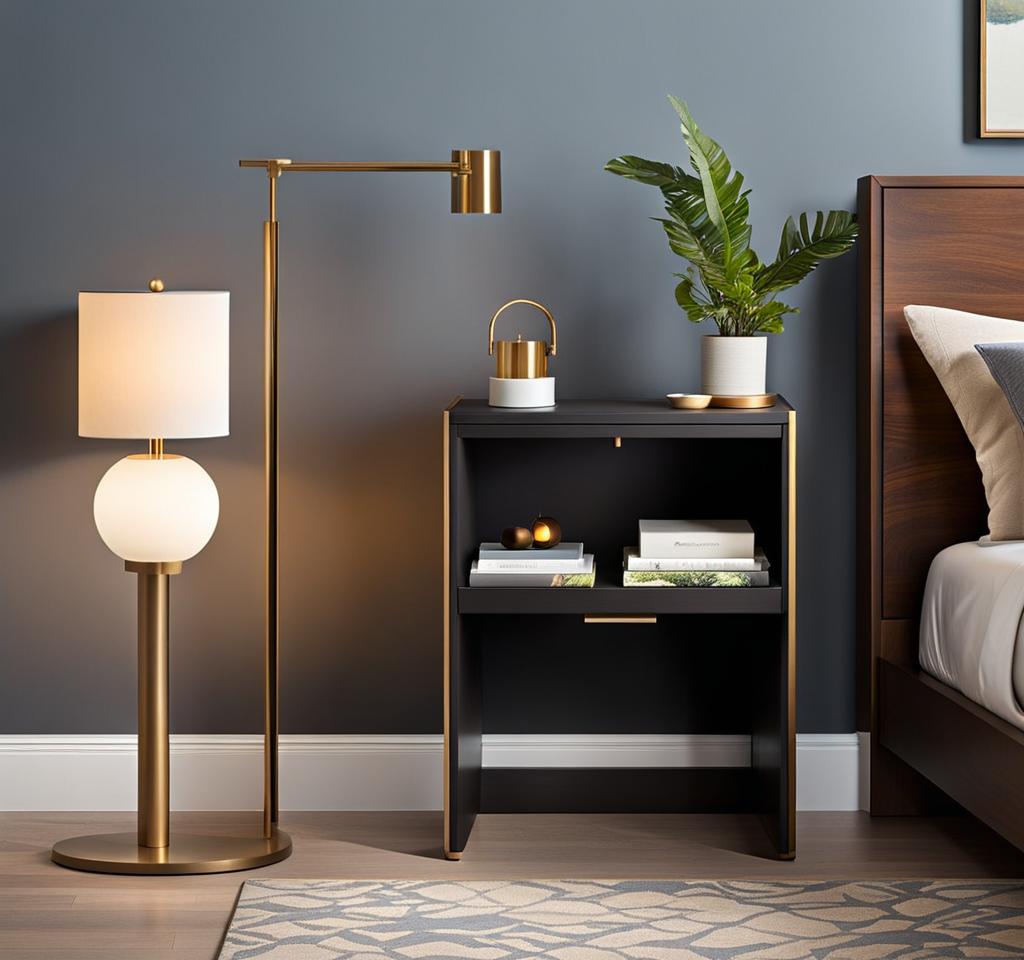When it comes to bedroom decor, finding the perfect balance between aesthetics and functionality is key. One often overlooked element that can make or break this harmony is the height of your nightstands. How tall should a nightstand be, you ask? Well, let me enlighten you on the importance of getting this measurement just right.
Nightstand Height: Finding the Sweet Spot
Achieving the ideal nightstand height is a delicate dance between comfort, practicality, and visual appeal. Too low, and you’ll find yourself constantly bending over, potentially straining your back. Too high, and you’ll be stretching awkwardly to reach your essentials, disrupting your hard-earned tranquility.
- Factors influencing nightstand height: The primary consideration is the height of your bed, as your nightstand should align with the top of your mattress or be slightly lower. Room dimensions, personal preferences, and the overall aesthetic you’re aiming for also play a role.
- Average nightstand height ranges: While there’s no one-size-fits-all solution, most nightstands fall within the range of 24 to 28 inches tall. However, don’t let these averages limit you – the perfect height is the one that feels just right for you.
- Importance of proper nightstand height: Beyond mere aesthetics, the right nightstand height can contribute to a peaceful sleep environment and foster a sense of order and tranquility in your private oasis.
Bed Height: The Foundation for Nightstand Perfection
Before you can determine the optimal nightstand height, you must first understand the height of your bed. After all, your nightstand is meant to be a harmonious companion, not a towering giant or a diminutive dwarf in comparison.
- Measuring bed height correctly: To get an accurate measurement, measure from the floor to the top of your mattress (or mattress topper, if you have one). Don’t forget to account for the thickness of your bed frame or box spring, if applicable.
- Adjusting nightstand height based on bed height: As a general rule, your nightstand should be level with or slightly lower than the top of your mattress. This ensures easy access to your bedside essentials without strain or discomfort.
- Standard bed heights and corresponding nightstand heights: For a standard bed height of 25 inches, a nightstand between 24 and 27 inches would be an ideal match. However, feel free to deviate from these guidelines if your personal preferences or bedroom style dictates otherwise.
Ergonomics and Comfort: Key Considerations
Let’s be real – nightstands aren’t just decorative pieces; they serve a practical purpose. Whether you’re reaching for your morning cup of coffee or your bedtime reading material, the right height can make all the difference in terms of comfort and accessibility.

- Optimal nightstand height for sitting and standing: When seated on the edge of your bed, your nightstand should be at a height that allows you to comfortably reach items without straining your neck or back. For standing access, a slightly taller nightstand (around 30 inches) may be more appropriate.
- Avoiding strain and discomfort: Nightstands that are too low or too high can lead to awkward postures, potentially causing muscle strain or even long-term issues like back pain. Listen to your body and adjust accordingly.
- Accessibility for different user heights: If you share your bedroom with a partner or family member of a different height, consider finding a happy medium or investing in adjustable nightstands to accommodate everyone’s needs.
Room Dimensions and Scale: Achieving Balance
Ah, the age-old dilemma of proportion and scale – it’s not just about the nightstand itself; it’s about how it harmonizes with the entire bedroom space. Trust me, getting this right can elevate your room from “meh” to “magazine-worthy” in an instant.
- Scaling nightstand height to room size: In smaller bedrooms, opt for shorter nightstands to avoid overwhelming the space. Conversely, larger rooms can accommodate taller nightstands, adding a sense of grandeur and presence.
- Proportion and visual harmony: Your nightstand’s height should complement the overall scale of your bed and other bedroom furniture. Aim for a balanced and cohesive look that doesn’t feel awkwardly disproportionate.
- Nightstand height in relation to other furniture: Consider how your nightstand’s height relates to adjacent pieces like dressers, armoires, or even the height of your artwork or wall decor. A well-proportioned room is a sight to behold.
Let’s not forget the cherry on top: your bedroom’s overall aesthetic. The height of your nightstands can either harmonize with or clash against your chosen design style, so it’s crucial to get it right.
- Nightstand height trends for different design styles: Contemporary and minimalist styles often call for sleeker, lower nightstands, while traditional or classic designs may favor taller, more substantial pieces.
- Coordinating heights for a cohesive look: If you’re aiming for a cohesive, put-together look, consider matching the heights of your nightstands or at least keeping them within a similar range.
- Using nightstand height to create focal points: In some cases, you may want your nightstands to be the focal point of your bedroom design. In these instances, playing with height can create visual interest and draw the eye where you want it.
Remember, at the end of the day, the “perfect” nightstand height is the one that strikes the right balance between comfort, practicality, and personal style for you and your bedroom sanctuary. So go forth, measure, and create the bedroom oasis of your dreams – one perfectly proportioned nightstand at a time!

This is where you’ll find inspiration to create a stylish and beautiful dream home.